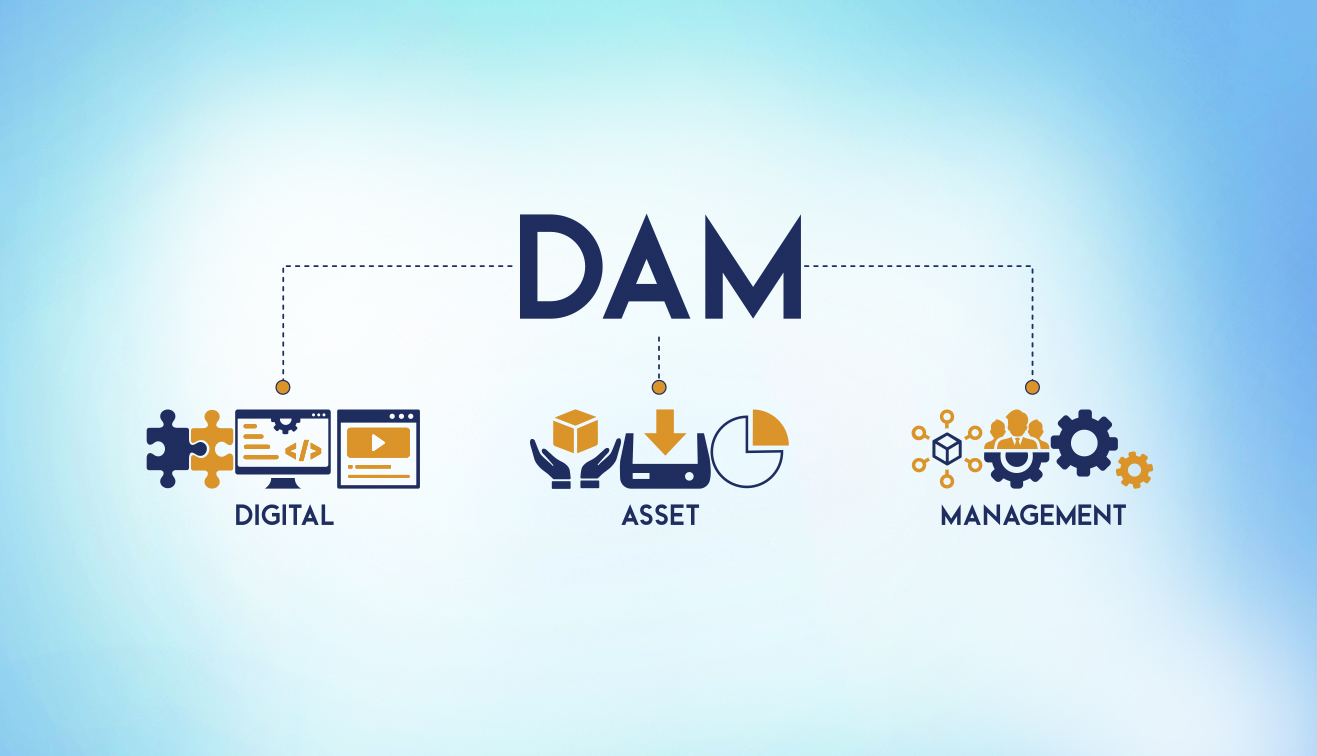PIM (Product Information Management) is often confused with many other tools that have overlapping functionalities but serve different purposes. Some may complement PIM and work better when integrated with it, while others may be capable of functioning in a standalone mode.
The global market for PIM is on an upward trajectory, poised to expand from its 2022 valuation of USD 12.2 billion to reach an estimated USD 23.8 billion by 2027, reflecting a remarkable CAGR of 14.3% throughout the forecast period. One of the primary drivers fuelling this growth is the escalating investment in cutting-edge technologies.
In today's dynamic business landscape, organizations are increasingly recognizing the imperative to enhance team efficiency, effectively manage product data, facilitate data syndication, and cater to the flourishing e-commerce sector. These fundamental factors are collectively acting as powerful catalysts, propelling the PIM market's expansion across diverse geographical regions.
This robust growth signifies the critical role that PIM solutions play in enabling businesses to navigate the digital era successfully, ensuring they remain competitive and responsive to the ever-evolving demands of the market.
Let’s take a dive into knowing the most common mistook products that you may confuse with a PIM.
What is PIM?
Before counting on the common tools confused with PIM, let’s recall what a PIM is.
A PIM, or Product Information Management, is a centralized software solution designed to store, manage, enrich, and distribute product information and data across various sales channels and platforms. It helps businesses streamline their product data management processes, ensuring that accurate and up-to-date product information is available to customers and stakeholders.
Here are some of the benefits that a PIM provides:
- Custom Workflows: PIM systems allow you to create custom workflows for product data management, ensuring that data is reviewed, approved, and published according to your organization's processes.
- Data Cleansing and Enrichment: PIM systems often include data cleansing tools that help identify and correct data inconsistencies and errors, ensuring data quality.
- Improved SEO and Searchability: Well-structured product information enhances search engine optimization (SEO) efforts, increasing the visibility of products in search results and driving organic traffic.
- Version Control: PIM systems maintain a history of product data changes, allowing you to track and revert to previous versions when necessary. This ensures data integrity and provides an audit trail.
- Cross-Selling and Upselling: With access to rich product data, businesses can easily identify cross-selling and upselling opportunities, increasing average order values and revenue.
- Automation of Repetitive Tasks: PIM systems automate tasks such as data imports, updates, and exports, reducing manual labour and the likelihood of human errors.
- Efficient Product Onboarding: Onboarding new products becomes more efficient, with standardized templates and workflows that ensure all necessary data is collected and organized.
- Scalability: PIM systems can grow with your business. They are scalable and can handle an increasing number of products, categories, and channels as your product catalog expands.
- Consistency Across Touchpoints: PIM ensures that product information remains consistent across all customer touchpoints, whether it's on your website, in marketing materials, or through customer support. This consistency helps build trust and brand reputation.
- Customization and Personalization: PIM systems allow for tailored product information presentation, enabling businesses to provide personalized product recommendations and content to customers based on their preferences and behaviours.
- Global Expansion: For businesses with international operations, PIM facilitates the management of multilingual product data, currencies, and regional variations, making it easier to expand into new markets.
Common tools confused with PIM
Here are some of the most common tools that might confuse one with PIM. Let us make it clear to you:
DAM (Digital Asset Management)
Though PIM and DAM have some similarities but are nowhere near the same. Having different purposes, PIM and DAM prove to be vital components of any eCommerce strategy. Both have their benefits and are complementary to each other.
The most confused together tools, when it comes to product information, are PIM and DAM.
DAM stands for Digital Asset Management and securely stores and organizes all the digital assets of an organization including images, videos, documents, and other marketing assets making it smooth to retrieve this data for use. While on the other hand, PIM focuses on storing, managing, and distributing digital assets.
DAM boosts work processes making them efficient as the digital assets are stored in a structured way. This data is easy to access and saves a lot of time for the teams. While PIM handles all the information related to the product it is also responsible for distributing these digital assets over various channels that may be handled by DAM along with other information. It is more focused on what is being sold and each bit of information related to it.
DAM helps with utilizing numerous valuable digital assets which can be extracted and shared securely both internally and externally across various departments of an organization.
Today most PIM software comes with an in-built DAM to make the process of data storage and syndication easier.
MDM (Master Data Management)
The terms Master Data Management (MDM) and PIM are often used interchangeably, but they are not the same at all. PIM is all about managing product data, such as product descriptions, pricing, and images and keeping it structured.
MDM, on the other hand, is focused on managing the core data of an organisation that is critical to its business processes. MDM manages data such as customer records, supplier records, product records, and more.
PIM and MDM are two distinct processes serving different purposes. PIM is more beneficial when it comes to sales and marketing while MDM is deployed organisation-wide making information accessible to users across it. It is focused on improving the operations of an organisation.
CMS (Content Management System)
CMS stands for Content Management System which allows users to create and manage web pages. It helps to manage marketing content like blogs, articles, landing pages etc. and enables organisations to carry out digital experience strategies. CMS also enables users to create any kind of website to deliver an engaging experience allowing users to create marketing campaigns that require multimedia content.
While PIM stores structured data in a central place, CMS stores unstructured data. Small businesses that aim to market their content should go for a CMS.
PLM (Product Lifecycle Management)
PLM stands for Product Lifecycle Management. It is a process that has its genesis with the product idea and ends at the product retirement. The PLM software tracks and stores the complete journey of a product from its inception till the time it has its presence in the market. All this information about all the stages of a product is shared among teams to work in conjunction with each other.
PLM allows users to integrate with designing software and makes the design process interactive. It benefits businesses by making project workflows easy and efficient. PLM helps leverage the data that is stored in it to continuously improve product quality and allows development teams to work in tandem with all the data of a product throughout its lifecycle.
While PLM is the process of managing the lifecycle of a product, PIM is a process of handling product data and distributing it over multiple channels.
ERP (Enterprise Resource Planning)
Enterprise Resource Planning (ERP) proves to be the backbone of an organisation as it interconnects various segments of an organisation namely warehouse management, logistics, manufacturing and so on. While PIM is a small part of an organisation that only deals with product information management, ERP manages almost all the data from various departments handling overall operations. It integrates everything from development to planning to sales and marketing.
ERP is used as an enterprise deployment which makes the business processes easy and efficient. While PIM leverages its capabilities to manage the niche of product information and marketing.
Link Key differences between PIM and ERP
PXM (Product Experience Management)
With breakneck competition in the market, businesses are focusing hard on enhancing customer experience more than ever, trying to personalise it as much as possible. Better personalisation creates a connection with buyers and strengthens their relationship with the brand. Product quality and prices are attributes that all brands are competing against and hence buyer experience has become a vital aspect for businesses to grow.
It’s the PXM (Product Experience Management) that plays its role here by making content contextualised and enhanced and delivering seamless communication over multiple channels. It optimises the experience for customers by creating personalised and engaging content. It delivers relevant product data that is based on customer behaviour. A customer’s activity, the device being used, demography etc is the information that is leveraged to create a personalised experience for customers. While PIM helps streamline the workflow by managing product information efficiently, PXM enables organisations to deliver a rich experience to customers.
Spreadsheet Software
Some businesses initially use spreadsheets to manage product information. However, these lack the collaboration, automation, and data quality control features of dedicated PIM systems, making them less efficient for large-scale product data management.
Spreadsheet software, such as Microsoft Excel or Google Sheets, is a common tool that is sometimes confused with PIM systems. Here's why:
- Data Organization: Spreadsheets are often used to organize data, including product information. Users may create columns for product names, descriptions, prices, and other details, making it seem like they are managing product information similarly to a PIM system.
- Familiarity: Many businesses are already familiar with spreadsheet software and use it for various purposes. They might initially use spreadsheets for managing product data because of their familiarity.
- Low Cost: Spreadsheets are readily available and relatively inexpensive compared to dedicated PIM software. Small businesses or startups may opt for spreadsheets initially to save on costs.
However, it's essential to understand that spreadsheets have limitations when compared to dedicated PIM systems. Using spreadsheet software for managing product data can be problematic as your business grows. Collaboration can be challenging when multiple team members need simultaneous access, data integrity is at risk due to potential errors and duplication, and as your product catalog expands, the inefficiency of spreadsheets becomes evident. Distributing data across various sales channels becomes error-prone, and tracking changes lack the sophistication of PIM systems, making it difficult to maintain version control. For streamlined and error-free product data management, especially in multi-channel environments, businesses often find dedicated PIM systems to be a more suitable solution.
Understanding the distinctions between the above-mentioned tools and PIM systems is crucial for businesses to choose the right solution for their specific needs.
What tool from the list fits in for your business?
Other related posts:
From Chaos to Control: 11 Signs That Your Business Needs a PIM
Going at Scale: How PIM Can Help You Sell Globally








.png?h=250&fm=webp)
.png?h=250&fm=webp)
.png?h=250&fm=webp)



.png?h=250&fm=webp)
.png?h=250&fm=webp)
.png?h=250&fm=webp)


.png?h=250&fm=webp)



.png?h=250&fm=webp)
















.png?h=250&fm=webp)

.png?h=250&fm=webp)
.png?h=250&fm=webp)



































































































































.png?h=250&fm=webp)


.jpg?h=250&fm=webp)





 copy.png?h=250&fm=webp)























_ Why do you need one.png?h=250&fm=webp)


























































.jpg?h=250&fm=webp)

.png?h=250&fm=webp)



.png?h=250&fm=webp)

.jpg?h=250&fm=webp)




.png?h=250&fm=webp)









.jpg?h=250&fm=webp)
